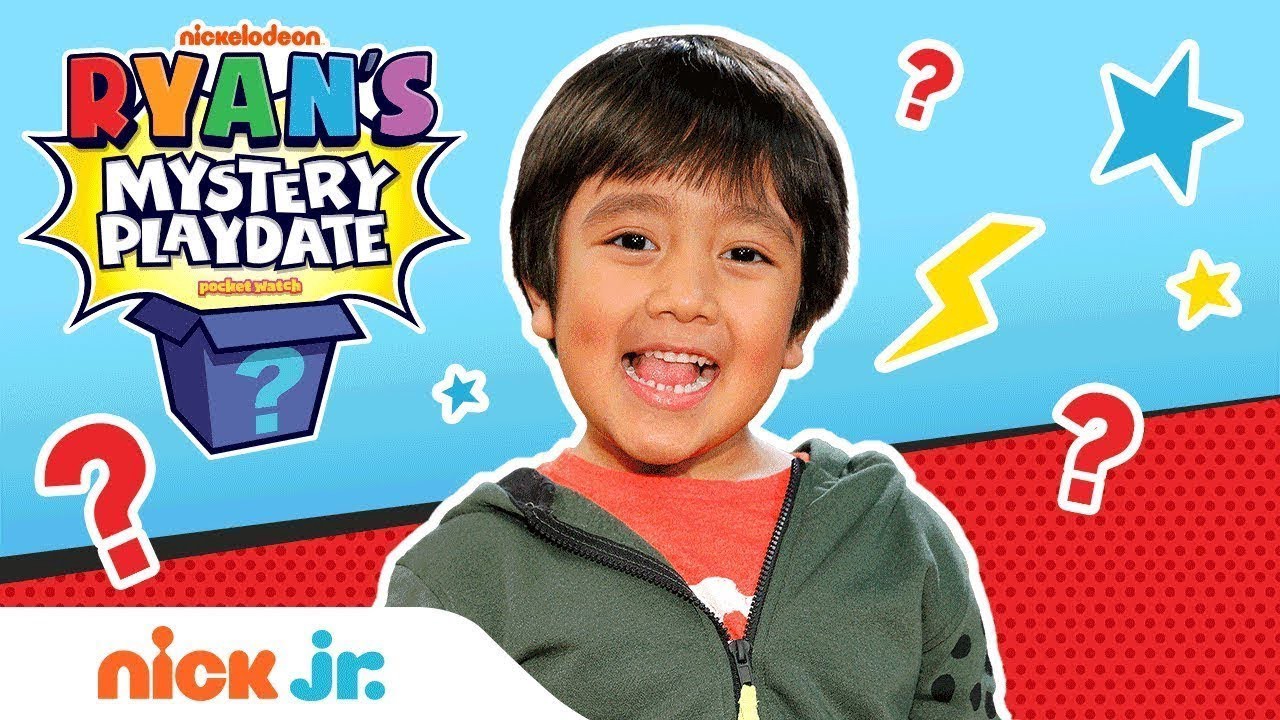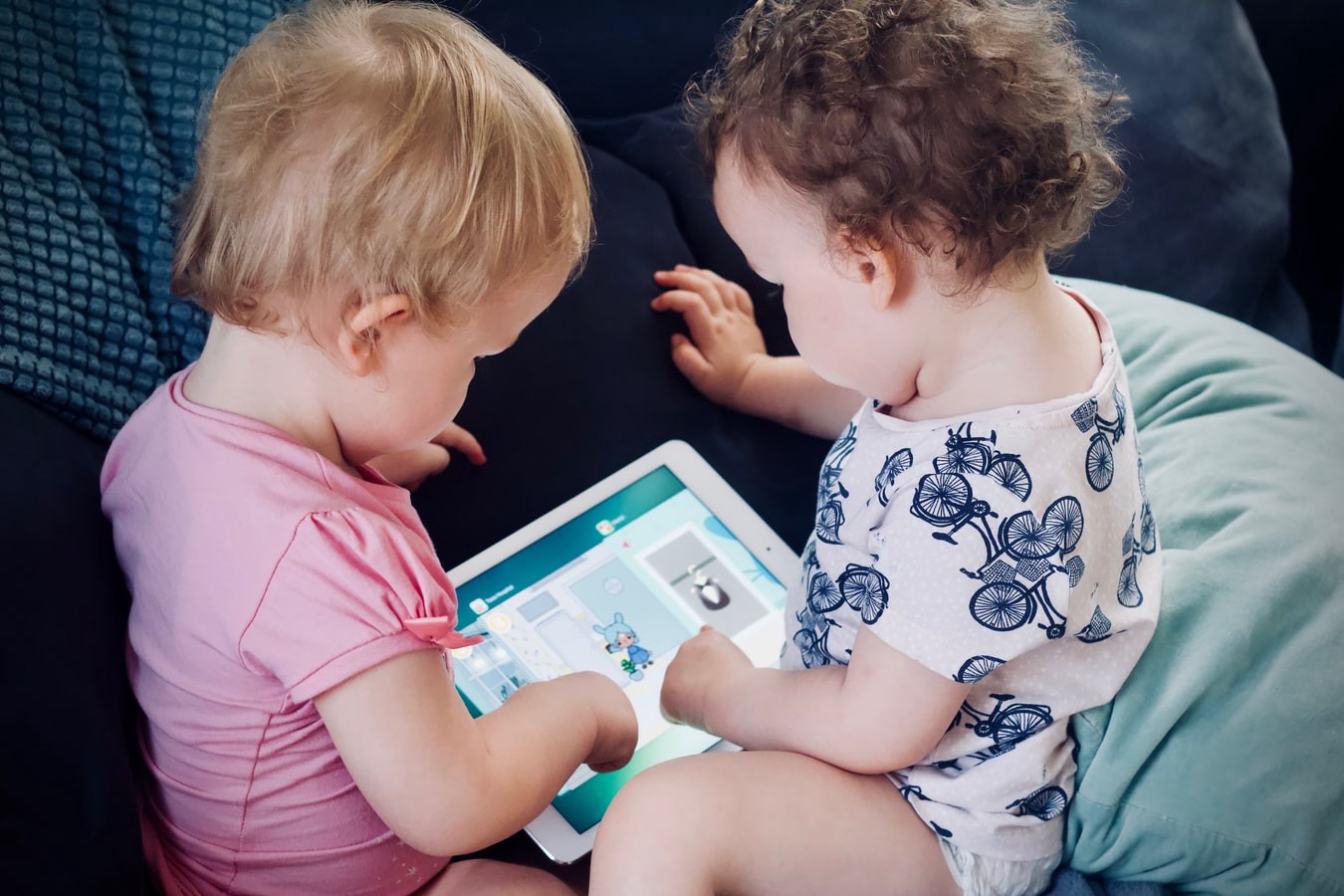In 2019, the top earning YouTuber was Ryan ToyReview AKA “Ryan’s World.” He made over $26 Million from his business ventures thanks to his YouTube success. He’s 8.

Photo of Ryan via Know Your Meme
Some people are shocked to see such a young person making so much money. Other people are kicking themselves in the behinds because they didn’t think of it first. Ryan clearly tapped into a demographic with huge earning potential. If you’re reading this article you’re not in his target demographic. In fact, if you can read at all you’re probably not in his target demographic. He’s not appealing to Generation Z, his audience is the next generation.
Gen Alpha is here, and they’re already online. While many of the members of this generation are quite young, technology is a part of their most formative years. Their babysitters are tablets and smartphones and when they do learn to read, they might not be flipping through paper. There’s no doubt this will shape their relationships with technology moving forward, and Ryan’s channel “Ryan’s World” holds a lot of data around the behaviors that will develop Gen Alpha’s minds.
There’s a reason Ryan is successful, but the audience who loves him will eventually move onto different content. Still, they’ll keep some expectations from their formative experiences with media. For the content creators and the designers of the world, this relationship with technology holds many of implications for the future of their crafts.
Creating Content for Gen Alpha
If you haven’t picked up on the fact already, Ryan’s channel is centered around toy reviews. They’re massively popular, with an egg hunt video sitting at over 1.95 billion views as Jan. 12, 2020. If you’ve never heard of Ryan or his channel, I can’t blame you. He makes toy reviews so he’s going to get views from whose age is a single digit.
Authentic Influence
Now Ryan endorses multiple products and has his own toy lines. This is where he generates a lot of his earning. Despite his young age, he’s the prefect influencer. He is really invested in showcasing toys and products. For toy manufacturers, his endorsement means a lot. He’s watched by millions of young, impressionable minds who will try to get their hands on the product.

Ryan in a partnership with Nickelodeon via Nick Jr.’s YouTube
I grew up during a time when toys were promoted on television, but the “infuencers” of the time would have been celebrities. Having Mary Kate and Ashley Olsen promote a toy was likely a profitable endorsement, but I have no reason to believe they truly use the product. We know Ryan actually plays with the toys, and we know what impresses him. The same cannot be said about the celebrity endorsements I grew up watching.
Gen Alpha will be accustomed to receiving influence from really niche and specific content creators. This generation will have evolving interests just like other generations, but they’ll feed their interests differently. As they put down the toys and start wearing make up, they’ll look for preteen content creators in the make up niche. They’re accustomed to receiving information online, and this habit is unlikely to change. Having a specialist in youth cosmetics will become essential for cosmetic brands to showcase their products on social media and engage young customers.
Return on Experience
When someone watches one of Ryan’s videos they receive an experience. Unlike a 30 second commercial that will cherrypick and highlight the best features of a product, Ryan shows the whole experience. In his videos he’ll open a toy, assemble the product with his dad, and actually play with it. It sets more realistic expectations of the consumer experience than the commercial. Plus, people actually want to watch it.
This isn’t exactly a new phenomenon. People like iJustine have been unboxing products on YouTube for years and her videos get millions of views. Understanding the full product experience appeals to many people, but it’s not necessarily an expectation for older generations. For Gen Alpha, they’ve grown up with the whole experience at their fingertips. People like Ryan have allowed potential customers to see a product experience from beginning to end without spending a dime.
Gen Alpha will have higher expectations for all elements of the their experience. Remember those tiny screws needed to secure batteries or the impossible zipties used to hold toys in place? Those will become a negative reflection of the product experience. Commercials won’t show you the struggle of unboxing a toy, but the content creators will. This level of transparency will likely benefit the customer, but the manufacturers will need to consider every step of the customer experience when working with this generation. They can benefit from receiving a glowing review from a content creator, but they can’t mask their cut corners when any customer can make video displaying the product experience.
Long-Form Content Will Survive
Thanks to platforms like Twitter, TikTok, an Instagram there seems to be an emphasis on short content. There’s not denying those platforms can be have great returns when used correctly, but long-form content still has its place. Typically, Ryan’s channel will showcase a toy in a daily adventure or objective.
In these videos, toys are part of the story. Many simple adventures that young children experiences are shown on Ryan’s channel, but his approach endorses a product. He might make a pretend dinner with his family using toys or design a maze using Legos. Whatever he’s experiencing, the toy becomes a character in the story. This can’t be expressed as thoroughly with short content.
Storytelling is going to be important for selling experiences. While Ryan’s videos typically range from 4 minutes to half an hour, the editing isn’t over the top. Clearly there are some simple effects and scenes are cut, but the videos aren’t edited too heavily. His goal is to tell a whole story, keep it fun, but make it appear realisitc.
Designing for Gen Alpha
Growing up in a digital world has given Gen Alpha a unique relationship with technology. While many members of Gen Z grew up with computers in their household, they were not as accessible during formative years. While a trackpad may be the standard for Gen Z, Gen Alpha has never known a world without a touch screen in their pockets. This means designing for the youngest generation will have its own challenges and opportunities.
Focus on Apps
Ryan’s Toy World is a channel existing on YouTube. Sure, you can embed a YouTube video on a website, but viewers are largely constrained to the limitations of the YouTube App. In some regards, this makes the content creation process easier. Video projects can live on YouTube and photography portfolios can be uploaded straight to Instagram.
While the need for web designers isn’t going away, the design standards are going to be largely compared to major content distributors. When designing platforms to host media, designers will need to look at social media apps first. Gen Alpha has proven their comfort using these apps, and scrolling through timelines has been a familiar concept their whole life.
The challenge for designers will be creating unique designs with familiar functionality. We already have Twitter, Instagram, and TikTok. These apps will be more familiar to Gen Alpha than the homepages of MSN or AOL. Designers will need to present news and content in a way that will be comfortable to Gen Alpha without losing the functionality of the websites familiar to older web users.
Comparing New Tech to Old Tech
Traditionally, designers have based their digital projects on familiar physical objects. In the early days of iTunes, the program was considered a digital jukebox. The familiar basis of a jukebox would help individuals born in the 70’s adapt to the functionality of the software. The practice of comparing the digital to the tangible is very common in design, but what happens when a generation is more familiar with the digital world?
When looking for design inspiration, every generation is different. A generation who grew up watching Ryan’s channel is going to be very comfortable with digital media. Similar to the prior point, newer generations will rely on their knowledge of existing software when understanding functionality. The concept of “saving to the cloud” may be more familiar than saving to a floppy disc. When using software like Word, the doesn’t hold the same meaning as it does to someone who’s actually used a floppy disc.
This will shape the analogies designers need to use. Will it become safe to assume older generations have adapted to software in the same ways Gen Alpha has? Or will designers need to rely on the assumption that younger generations are more capable of adapting to to changes than older generations? Many of the concepts referenced in old versions of software like Word are irrelevant to people who have never used physical media. Designers will need to understand analogies used by people older and younger than themselves.
Design for Gestures
If I had to guess the biggest challenge for designers coming with Gen Alpha it’d the rise of gestures as a form of navigation. Children will have touchscreens in their hands before they ever use a computer mouse and the mouse will be the secondary form of navigation for them. Plus, they’re now living in a time when iPads and iPhones are buttonless. Designers will be forced to realize five fingers on a hands are more powerful than two buttons on a mouse.

Babies using an iPad. Photo by Jelleke Vanooteghem on Unsplash
Buttonless devices are going to become more common and screens will crawl closer and closer to their bezels. Apps for smartphones will want to take advantage of gestures for building mobile-friendly designs. Maybe users can pull down to expose a menu or pinch to close a pop-up. Gen Alpha will know how to do these things without having to adapt like other users would.
I truly believe gestures are going to be integrated into more designs moving forward and this is not a result of Gen Alpha, Gen Z, or any other generation. It’s a result of increased tech power and the abilities of hardware. Younger generations will just be more familiar with gestures, and they will be accustomed to using these gestures for productivity. They’re also more familiar with the limitations of smaller screen, and this means they’re less dependent on the mouse than older users.
Conclusion
Tech changes are nothing new, regardless of the generation.There will always be people who try new methods of content creation, and new technology will have its implications for design. When you see an 8-year-old on the top of YouTube’s earnings, it’s hard to deny that he’s done something right. Yes, his family helps run his channel, but they saw an opportunity in the market and embraced the opportunities associated with their niche. That niche just happens to be really young, and this is one of our first opportunities to take a look into unique traits the youngest people on the web.
Even without Ryan, it’s obvious that changes are coming. If you watch a toddler use an iPad, it’s incredible how much they know. They don’t need to unlearn the commands of a traditional desktop computer. Instead, they just move their fingers and the screen does what they want. Tech is becoming more intuitive, especially when your mind hasn’t been jaded by old methods of interaction.
Knowing the success of Ryan’s channel presents opportunities for content creation and design. Understanding his audience means understanding future customers. By looking into the behaviors and decisions that have made “Ryan’s World” YouTube’s top channel, some best practices begin to emerge. This will give designers and content creators an edge when trying to work with their youngest audience and allow them to stay ahead of the design curve.








